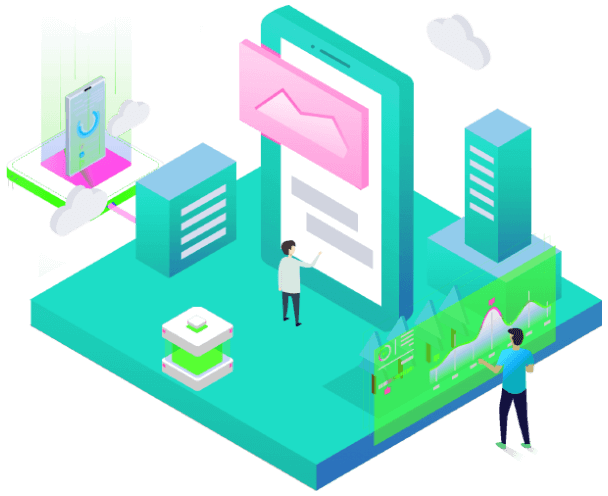Unlocking Success: How Predictive UX Drives Higher Conversion Rates
The Cutting Edge of User Experience
Predictive UX, or Predictive User Experience, is a new and powerful way to turn website visitors into loyal customers for small businesses. Imagine if your website could understand what each visitor wants before they even ask for it. This is what Predictive UX does.
Here’s how it works:
- Data Analytics: Think of data analytics as collecting and studying information about how visitors use your website. For example, which pages they visit most, what products they look at, or how long they stay on certain pages.
- Artificial Intelligence (AI): AI is like a super-smart computer that can learn from the data it collects. It uses this information to make predictions about what a visitor might want to see or do next.
By combining these two technologies, Predictive UX creates a smooth and personalized experience for each visitor. This means your website can show them the products or information they are most likely to be interested in, even before they ask. This not only makes visitors happy but also makes them more likely to buy something or use your services. In simple terms, Predictive UX helps turn visitors into happy customers, boosting your sales and satisfaction..
What is Predictive UX?

Predictive UX, or Predictive User Experience, is like having a smart assistant for your website. This smart assistant uses information about how people use your site to guess what they might want to do next. Here’s how it works:
- User Data: Every time someone visits your website, they leave behind clues about what they are interested in. This could be the pages they visit, the products they look at, or how long they stay on certain parts of your site.
- Analyzing Patterns: Predictive UX looks at these clues to find patterns. For example, if many visitors who look at a certain product also end up buying it, the system will notice this trend.
- Forecasting Behavior: Using these patterns, Predictive UX makes educated guesses about what future visitors might want. If someone is looking at similar products or pages, the system can predict that they might be interested in the same things.
- Tailoring the Website: Based on these predictions, the website can change what it shows to each visitor. For example, if a visitor is looking at winter coats, the site might highlight related items like scarves or boots.
By using Predictive UX, your website becomes easier to use and more engaging. Visitors find what they need more quickly and are more likely to make a purchase or take the action you want them to. This helps turn more visitors into satisfied customers, boosting your business success.
Why Predictive UX Matters for Small Businesses

As a small business owner, every person who visits your website is important. You want to make sure they have a great experience so they become customers. This is where Predictive UX, or Predictive User Experience, comes in. Here’s why it matters:
- Every Visitor Counts: When you have a small business, you can’t afford to lose potential customers. Each visitor to your website is a chance to make a sale or build a relationship.
- Smoother Experience: Predictive UX helps create a smoother, more personalized experience for each visitor. It does this by guessing what each person might need based on their actions on your site. For example, if someone has looked at several products in a certain category, the site can show them related items they might like.
- Increases Sales: By making it easier for visitors to find what they want, Predictive UX increases the chances that they will make a purchase. When people find what they need quickly and easily, they are more likely to buy.
- Builds Trust and Loyalty: When your website feels personalized and easy to use, visitors are happier. Happy customers are more likely to return and tell others about your business. This builds trust and loyalty, which are essential for long-term success.
In simple terms, Predictive UX helps turn more visitors into customers by making your website smarter and more user-friendly. This can lead to more sales and a loyal customer base, which is crucial for the growth and success of your small business.
Boosting Conversion Rates with Predictive UX

Predictive UX can significantly increase your website’s conversion rates, meaning more visitors will become paying customers. Here’s how it works:
Personalized Recommendations
Predictive UX looks at what visitors do on your website to offer personalized recommendations.
- Example: If a visitor often checks out skincare products, the website will show more skincare items on the homepage.
- Result: This tailored approach makes visitors more interested and likely to buy, increasing engagement and conversion rates.
Streamlined Navigation
Predictive UX makes your website easier to navigate by understanding common paths visitors take.
- Example: If data shows many visitors search for a specific service, the website can put a direct link to that service on the main page.
- Result: This reduces frustration, making it easier for visitors to find what they need, which leads to more conversions.
Dynamic Content
Predictive UX changes content on your website in real-time to match visitor preferences.
- Example: New visitors might see introductory information, while returning visitors see updates or personalized offers.
- Result: This keeps the content relevant and engaging for each type of visitor, making them more likely to take desired actions like making a purchase.
By implementing these strategies, Predictive UX helps ensure visitors have a smooth, personalized experience on your website, making them more likely to become customers.
Real-Life Success Stories
To understand how powerful Predictive UX can be, let’s look at two well-known companies: Amazon and Netflix. They have successfully used Predictive UX to improve their customer experience and increase sales.
Amazon’s Personalized Shopping Experience
Amazon is a great example of how Predictive UX works.
- Personalized Recommendations: Amazon collects data on what users look at and buy. It uses this data to suggest other products they might like.
- Example: If you often browse books about gardening, Amazon will recommend new gardening books or related tools.
- Tailored Search Results: When you search for something on Amazon, the results are customized based on your past searches and purchases.
- Targeted Ads: The ads you see on Amazon are tailored to your interests, making them more relevant and enticing.
Result: This personalized approach keeps customers engaged, makes it easier to find what they want, and encourages them to buy more. As a result, Amazon has seen a big increase in both sales and customer loyalty.
Netflix’s Content Suggestions
Netflix uses Predictive UX to help users find shows and movies they’ll enjoy.
- Viewing History: Netflix tracks what you watch and how you rate shows and movies.
- Personalized Recommendations: Based on this data, Netflix suggests new shows and movies you might like.
- Example: If you enjoy watching crime dramas, Netflix will recommend similar shows and movies.
Result: This makes it easier for users to find content they’ll enjoy, leading to higher satisfaction and more time spent on the platform. Netflix’s use of Predictive UX has helped keep users engaged and happy.
Both Amazon and Netflix use Predictive UX to provide personalized experiences for their users. By analyzing user data and tailoring their services accordingly, they’ve been able to boost their conversion rates and keep customers coming back. Small businesses can apply these same principles to improve their own websites and increase sales.
Implementing Predictive UX in Your Small Business

Predictive UX can greatly improve your website’s effectiveness by making it more personalized and user-friendly. Here’s how you can start implementing it in your small business:
Start with Data Collection
First, you need to gather information about how visitors use your website. This includes:
- Page Views: How many times each page on your site is viewed.
- Click-Through Rates: How often visitors click on links or buttons.
- Time Spent: How long visitors stay on different parts of your site.
You can use tools like Google Analytics to collect and analyze this data. It will help you understand what visitors are interested in and how they navigate your site.
Use AI and Machine Learning
Next, invest in technologies like Artificial Intelligence (AI) and Machine Learning. These tools can process the data you’ve collected and find patterns in user behavior. For example, they can predict what products a visitor might be interested in based on their past behavior.
- AI and Machine Learning: These technologies analyze the data and help you predict future user actions, allowing you to tailor the website experience to each visitor.
Test and Optimize
After making changes based on predictive insights, it’s important to continuously test and improve your website. Here’s how:
- A/B Testing: This involves creating two versions of a web page and seeing which one performs better. For example, you could test two different layouts for your homepage to see which one gets more clicks.
- Optimize: Based on the results of your tests, make adjustments to improve your site’s performance. Regularly refine your approach based on feedback and performance metrics.
By following these steps, you can implement Predictive UX in your small business. This will help create a more engaging and personalized experience for your visitors, leading to higher conversion rates and customer satisfaction.
The Future of Predictive UX

Predictive UX has a lot of potential to transform how businesses interact with customers online. Here’s why it’s important for small businesses and how it will help in the future:
Vast Potential
Predictive UX is just getting started. As technology continues to advance, the capabilities of Predictive UX will grow even more. This means that the ways it can help your business will expand, offering more ways to improve customer experiences and increase sales.
Growing Importance
As more businesses start using Predictive UX, it will become a standard practice in the industry. This means that customers will come to expect a personalized and smooth experience when they visit any website. If your business adopts Predictive UX now, you’ll be ahead of the curve.
Competitive Advantage
By using Predictive UX, small businesses can better compete with larger companies. It helps create a superior user experience that can attract and retain customers. This means higher conversion rates and stronger customer loyalty, which are crucial for business growth.
Future Benefits
- Enhanced User Experience: Predictive UX will continue to improve, offering even more accurate and helpful recommendations for users.
- Increased Conversions: As the technology gets better, it will help convert more visitors into customers.
- Customer Loyalty: Providing a personalized experience builds trust and keeps customers coming back.
Adopting Predictive UX now is a smart move for small businesses. It not only improves your current user experience but also prepares you for future advancements. By staying ahead, you can offer a better experience than your competitors, driving conversions and building long-term customer loyalty.
Understand This
Predictive UX, or Predictive User Experience, is more than just a passing trend. It’s a powerful tool that can greatly benefit small businesses. Here’s why it’s important and how it can help your business succeed:
Boosting Conversion Rates
Predictive UX uses data about how visitors interact with your website to predict what they might want next. This allows you to tailor their experience, making it more likely they’ll make a purchase. In simple terms, it helps turn more visitors into customers.
Enhancing Customer Satisfaction
When your website feels personalized and easy to use, visitors are happier. Predictive UX creates a smoother, more engaging experience, which makes customers feel valued and understood. Happy customers are more likely to come back and recommend your business to others.
Leveraging User Data and Advanced Technologies
By collecting data on how visitors use your site and applying advanced technologies like AI and machine learning, you can create a more personalized and efficient user experience. This means showing visitors what they want to see, making it easier for them to find and buy products or services.
Why You Should Implement Predictive UX
Implementing Predictive UX in your business strategy can lead to significant improvements in how visitors interact with your website. You’ll see:
- Increased Sales: More visitors will turn into paying customers.
- Better Customer Retention: Satisfied customers are more likely to return.
- Competitive Edge: Offering a personalized user experience can set you apart from competitors.
Take Action Now
Start using Predictive UX today. It’s a strategic move that can help your small business grow by creating engaging, efficient, and personalized experiences for your customers. Watch your conversion rates soar and enjoy the benefits of happier, more loyal customers.
